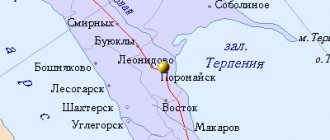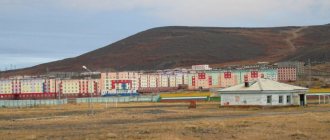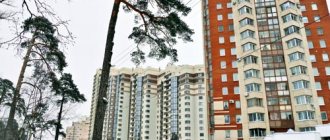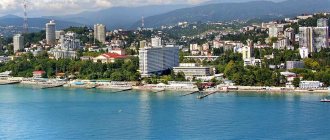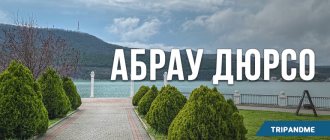When my friends found out that I was flying to Naryan-Mar, they asked: “Where is this, near Alaska?” No. This is the capital of the Nenets (not to be confused with the Yamalo-Nenets) Autonomous Okrug (NAO), which is part of the Arkhangelsk region. It takes a little over two hours to fly there from Moscow, but already as you approach the city, looking out the window, you realize that this is a completely different world. This is the edge of the earth, the Arctic, the Russian North, the accessible Arctic.
I’ll admit right away: I was very lucky with the time of year. No matter how attractive the north is, there are two seasons for traveling to the Arctic – early autumn (September) and late winter (March-April). It is at this time that the Arctic nature is able to accept a new person without frightening him off with an abundance of feisty insects and frost reaching minus 42 ° C. Alexander Sergeevich’s favorite season was generous to me, and in the first two days the sun was shining, the sky was blue, and the temperature rose to plus 15 °C. .
Under the wing of the plane, the tundra is singing about something...
Northern life
Part of our cheerful group, which flew to the capital of the Nenets Okrug, was settled in the village of Iskateley. The working settlement was formed 6 km from Naryan-Mar downstream of the Pechora River on the site of a geological exploration base in 1974. Now there are almost no geologists among the seven thousand population of the urban settlement (this is how the status of Seekers officially sounds), but the name remains. The houses here are mostly two-story, wooden. Near many there are boats and vegetable gardens where locals grow potatoes.
Neighborhoods of the working village of Iskateley
Naryan-Mar, where in 20-30 minutes. You can easily get there by city bus or taxi, older than Seekers. In 1903, on the territory of the modern city, the Pechora timber mill was founded by local loggers and a Norwegian industrialist. It became the first industrial enterprise in the lower reaches of Pechora, thanks to which the predecessor of the city, the Beloshchelsky settlement (Beloshchelye), gained strength. In the 30s, it received the name “Naryan-Mar” (translated from Nenets as “Red City”). The timber mill, by the way, was a city-forming enterprise until the mid-90s, but then went bankrupt.
In terms of architecture, the capital of the Nenets Autonomous Okrug is partially similar to the Seekers, but it now has more monolithic houses, where wooden residents are being resettled. The buildings remaining from the USSR are being tiled and painted, while the vegetable gardens and greenhouses beloved by residents are not going anywhere. The locals almost never plant flowers, but there are some in the city. City services plant flowerbed plants in boxes that are attached to the roadway fences. The bright colors of residential buildings are not only a recognizable style of the polar city, but also the theme for the funny names and nicknames of more than 30 houses.
Urban vegetable garden under the windows of a house, Iskateley village
During the Tundra festival, held in 2022, an interactive map Naryan map (naryan-map.ru) was compiled, and it turned out that there are many small stories in Naryan-Mar - almost legends. For example, house 29 b on the street. Lenin is called “Sandwich” because the building’s cladding used alternating red and white bricks. The city also has its own “Three Little Pigs” (Aviatorov, 24, building 1-3). These houses are architecturally similar to each other and have a characteristic pink color of the facades.
Pechora also adds color to the city. Along it, residents travel from the port of Naryan-Mar to remote villages on hovercraft. They are able to cope with stormy waters when Pechora rages above 5–7 points.
Passenger port in Naryan-Mar
Residential areas
Geographically, the city consists of three residential areas: Central, Kachgort and Lesozavod.
central District
The central district is an area with predominant mid-rise and low-rise residential buildings and developed social infrastructure. The largest district of the city in terms of population and area. The central region is located between large water bodies that contain: the Gorodetsky Shar channel, the Gorodetskaya Kurya Bay, Lake Kachgort and the Kachgortinskaya Kurya. Microdistricts: Central, Karmanovka, Gorodetsky, Aviatorov, Old Airport, Portovy, Yuzhny.
Kachgort
The Kachgort district is located in the center of the urban district. The area is located on the federal highway A381, connecting the Central district of the city with the airport. The road passes through the streets: Rabochaya, named after the 60th anniversary of the October Revolution and street named after V.I. Lenin. The main street of the district is 60th Anniversary of October Street. The road runs through the entire territory of the Kachgort district from southwest to northeast and connects it with the Central District and the Timber Plant. Microdistricts: RSU, Kachgort, Maly Kachgort, Fish Processing Plant, Khorey-Verskaya Expedition, State Farm, Sakhalin.
Sawmill
The Lesozavod district is located in the northeastern part of the city. Yubileinaya Street is a city-wide thoroughfare that runs through the entire area and goes in a north-eastern direction to the village of Iskateley. Yubileinaya Street, as well as Zavodskaya Street, connect the components of the district, the microdistricts: Lesozavod, New Village, Mirny, Zakhrebetny, Staraya Bondarka and Novaya Bondarka.
What's the price
Prices in stores both in the city and in the village are high. Until you deliver the goods to the Nenets Okrug, you will have to spend a lot of money. It’s the same story if you need to produce something here and try to establish a market outside the district. Communication with the mainland in summer and autumn by air and water. There are roads only in Naryan-Mar and its immediate surroundings, including Iskateley. When winter sets in and constant snow falls, the necessary long-distance destinations, for example, Naryan-Mar - Usinsk, are filled with water and cars are driven along the frozen road. Federal authorities are promising to allocate significant funds for the construction of a permanent road, and by 2024 it may appear here. So, both in summer and winter, the road will soon serve people well. And the winters here are harsh: minus 35 °C is the norm, but sometimes 42 °C can occur. This was told by local taxi driver Gashim, who moved here in 1983 from Azerbaijan. To the question: “How could you come to the Arctic and stay after the south?” - he replied: “Now this is my homeland. I like it here. Hunting, fishing, winter... And I like northern people. They are honest and gentle!”
City post office, Naryan-Mar
Back to prices. They are not just “tall” here, they are “Moscow” and even higher. On the eve of the New Year holidays, prices for common fruits and vegetables reach 500-600 rubles. Lemons in September already cost 200 rubles, and the principle “I’ll go to another store and buy cheaper lemons”, unfortunately, does not work here. Prices are high everywhere. The main local meat is venison. “Life” and “deer” sound the same in Nenets. The deer from horns to hooves goes into action: the carcass is used as food - reindeer stew, fried liver, boiled tongue... The autumn skin goes to malitsa (Nenets outer clothing with a hood and almost to the floor). This is also the bed of a tundra dweller, chum, even dried deer skin is used for the lasso. And in general, the word “olenium” is a wise world order made up of simple things.
For an expanded assortment of venison, you need to go to the company store of the local meat processing plant OJSC Meat Products . There is a large selection here: canned food, sausages, meatballs, steaks, goulash, minced meat, deli meats, etc. Neck and excellent pressed boiled venison cost about 839 rubles/kg. Deer chips are considered chic. They sell out quickly and if you come across them, buy several packs at once - for yourself and friends.
Assortment of branded meat store, Naryan-Mar
In addition to venison, the diet of northerners also consists of local fish. Peled-payha, nelma-syavta, pike-whitefish and whitefish-palkur, and here is also white fish on the ear and quick-salt. It makes sense to buy fish in the company store “Fish shop “Argus” (Saprygina St., 10) . Interestingly, if you ask locals where this store is located, many will not answer you. And not out of malice (this has not been observed among northerners), they simply do not go there. Almost every family has its own fish getter: father, husband, son, brother. Fishing for the residents of Naryan-Mar and the Seekers is not even a hobby, it is a way of life. They divide local fish into red (salmon), white (whitefish, nelma, omul, broad whitefish, peled) and gray (pike, sorog, perch). But marine and coastal fish, such as navaga and smelt, are not even customary to “color”.
For fishermen, one of the most delicious fish allowed for catching is herring - the White Sea vendace from the whitefish genus. It happens that in some year there is not enough of it, so the store only has frozen ones for 365 rubles. Nearby are frozen sorog (roach) for 140 rubles, trout, also frozen, with a head for 950 rubles. and wonderful frozen Pechora salmon – 1835 rubles. for 1 kg. This salmon is so fatty that it is even difficult to completely salt it. Of course, there is also the beautiful nelma (sometimes up to 1 m long and weighing up to 15 kg), but it is listed in the Red Book.
Northern fish
Nelma is also called “white fish” due to the white color of its meat. Thanks to the ban on catching nelma, there are more and sometimes incidents happen. By purchasing a fishing license, local fishermen are not insured against getting caught in nelma nets. The fish is powerful, heavy, it rushes like a torpedo, vigorously waving its tail and drowning out small fish, and, of course, gets tangled in nets. Often, before the fisherman swims up to it, the fish dies. And fisheries conservation officers are able to understand just by landing a boat whether there is salmon among the catch or not.
Beauty under your feet
The question is rhetorical: what kind of crazy genius mixed and splashed onto this harsh land such colors of the autumn tundra - gold, red, green, black, gray, silver, orange - and covered them with blue and white. Maybe this is what the anticipation of winter should look like, when white will level and consume everything. Tundra is such a generous gift for the eyes, such a luxurious gift.
The colors simply hurt the eye, crossing all the usual boundaries of shades. Children should be taken here, artists and designers should come here. Here all the beauty is not at eye level, you don’t even need to raise your head for it, it’s all under your feet, and it’s captivating.
Autumn colors of the tundra
I repeat, I was lucky with the weather, and my first acquaintance with the tundra - sunny and short - occurred immediately after leaving Naryan-Mar. And it continued in the Historical, Cultural and Landscape Museum-Reserve "Pustozersk" . The city of the same name was “cut down” by order of Tsar Ivan III in the fall of 1499. Thanks to its special geographical location, it played an outstanding role in the development of “new lands”. Here, the Pomor ships, caught by ice in the Yugorsky Shar or the Kara Sea, making their way to the Ob, spent the winter here. Detachments of the Great Northern Expedition set sail from Pustozersk. The first attempts to develop the oil business in Peter's Russia are also associated with his name. Reindeer herders of the European and Trans-Ural tundras, industrialists and traders from various counties and lands came to Pustozersk for winter fairs.
As time passed, due to changes in trade routes and other objective factors, the XX century met the city as a small northern village. Now, unfortunately, nothing even remains of her - only her name.
Symbolic entrance to the Pustozersk Museum-Reserve
It takes an hour to get to Pustozersk by boat from Naryan-Mar by water. We came out on a deserted shore, and here it is - a museum-reserve, named after the first Russian city in the Arctic, which is older than Arkhangelsk and Murmansk. We had a 12 km walking route. We walked along hummocks and paths, paths and bridges. All around there was tundra and forest, a river and water meadows, there was even a swamp, after which some people wrung out their socks. You can't drown in it, but high rubber boots are a must. From time to time, the signature Nenets rain began - fine, as if someone was irrigating the plants with a sprayer.
Sometimes there was wind, but overall the weather was pleasant. And the nature... The nature here is such that you just widen your eyes: well, it can’t be! Maybe! Tundra can do everything.
Pillow for travel to Pustozersk
In the reserve there is a place where you can walk, tear, collect and try everything - to the touch and taste. Of course, with due respect and respect. And there is a special area where you can only walk, look, take pictures and breathe.
In any case, you need to carefully look at your feet. And not only so as not to step on the grandfather of the lemming (the basis of the entire northern food chain), but also so as not to miss amazing herbs, lichens and mushrooms. The tundra, on the one hand, is endless, vast, and there is only one limitation for it - the horizon. On the other hand, it all consists of very small, tiny parts. There are 120 species of moss alone. On a piece of land the size of a landscape leaf, 3-4 types of lichens plus some kind of grass, dwarf birch, berry, mushroom can simultaneously fit. Tundra is a celebration of life, its splendor.
Flora and fauna of the Nenets tundra
We walked as a team of 9 people, led by Evgenia Kolesnikova, head of the museum communications department. The team was made up of people who hunt great species, dream of rare photo opportunities, and love berries. For the first quarter of the journey, all we did was stop every 30–50 m, take photographs and scour the ground in search of lingonberries, blueberries and honeysuckle. Zhenya showed us the crazy, reassured us that the cloudberries had already gone and we didn’t find the princess, and we began to try the crazy. The berry is awesome!
When walking along the tundra, do not forget that you can easily get lost here. There are no specially marked trails or signs in the reserve, and this is not a forest in the Moscow region. Here you can meet a wolverine (they say that it is a terrible beast, capable of tearing a deer with its powerful claws), an elk, and even a brown bear.
A piece of tunda in the palm of your hand, Pustozersk
Attractions
- Administration building of the Nenets Autonomous Okrug
- Nenets Museum of Local Lore
- Shevelev House (Pustozersk Museum-Reserve)
- Main Post Office building
- Monument to the 500th anniversary of Pustozersk
- Captain Tarasov's plane
- Palace of Culture "Arctic"
- Monument to the crew of the tugboat "Komsomolets"
- Monument to the “Feat of the Participants of the Reindeer Transport Battalions during the Great Patriotic War”
- Epiphany Cathedral
- Holy Kazan Church (Old Orthodox Pomeranian Church)
- Monument to Naryan-Mar port workers
- Obelisk of Victory
- Lenin monument
A few words about birch!
Finally, I want to tell you about birch. Dwarf birch, also known as dwarf birch, dwarf birch and slate – that’s all it is – thin, graceful, small. In fact, not a tree, but a shrub 20-60 cm high - part of the tundra, responsible for the gold in its picturesque splendor in the fall.
Do you know why birch trees have black stripes? The Russian beauty breathes through them! The white bark is strong, and the black cut stripes “give” oxygen to the tree. Birch bark does not allow moisture and air to pass through, so in the Nenets Autonomous Okrug it is used for the production of floats and shoe insoles.
Dwarf birch (in the foreground), Pustozersk
Also on the website www.gastronom.ru read about traveling around Russia Why is it necessary to visit Vladivostok? We counted 10 good reasons
Population
According to 2022 data, the population of Naryan-Mar was 24,775 people. Since 2012, there has been annual population growth.
The main peoples living in the city:
- Russians;
- Nenets;
- Komi;
- Ukrainians.
What to try?
Wild plants of the north, berries: cloudberries, princelings, lingonberries, blueberries, blueberries, honeysuckle and, of course, crazy! Psycho (this is what this rare berry is called in the Nenets Autonomous Okrug), also known as shiksha, crowberry, crowberry, berry birchberry, blueberry, lyha. In Rus', the psycho was called bear berry, drunkenness, sixa, ssykha, black grass. Foreigners call it “crowberry” because it looks like a raven’s eye, and Finns call it “pork blueberry”
Psycho is an evergreen, creeping shrub from the heather family with needle-like leaves and black berries. The berries have an unusual sour taste. But this is not the acid of lemon and cranberry; everything here is much more complicated. The acid is softer and richer in flavor. Inside are several seeds and juice that can color everything and everyone. Berries are a good diuretic and sedative. Psycha treats headaches, epilepsy and depression.
Psycho
Where to visit?
If you want to understand and realize what the Arctic and Arctic recreation are, you need:
- visit Vaigach Island - a sacred place of the Nenets people, but only as part of an organized excursion (otherwise the shamans will misunderstand you)
- see Northern Timan, rich in waterfalls and miraculous stone sculptures interspersed with semi-precious stones
- swim in the Pym-Va-Shor hot springs, the only spring beyond the Arctic Circle. The water in it is healing, its temperature in winter and summer ranges from 18 to 28 ° C
- walk around Amderma. This is an almost abandoned village, preserved from the times of the USSR
- take part in the “Visiting Sula” snowmobile tour. Sula – in Finno-Ugric means “taiga”. A river with this name is always beautiful, but the icy Shchuchy waterfall, which forms frozen grottoes in winter, makes the river a unique platform for photo shoots
- relax at the Hanaway Xia recreation center, two hours away along the river from Naryan-Mar. Here, three generations of Fyodor Lichutin’s family fished and wandered the tundra, and now Fyodor meets guests, takes them on hikes and boat rides along Pechora, and most importantly, organizes hunting and fishing.
Vaygach Island - a sacred place of the Nenets people
Ecology
The environmental situation in the city has recently become a cause for concern. This was announced at a conference dedicated to environmental problems in the Far North (Naryan-Mar, 2017). This situation is mainly due to the huge number of authorized and unauthorized landfills in the suburbs and tundra.
This negatively affects the purity of water in the river. Pechore. According to the Naryan-Mar hydrometeorological station, the level of atmospheric air pollution is within acceptable limits and does not cause concern.
Sources of pollution are transport, thermal power plants and boiler houses. Air pollutants: sulfur dioxide, nitrogen dioxide, carbon monoxide and others.
What should I bring?
The NAO Business Development Center recently updated the “Made in NAO” brand and opened a store of the same name in the Arctic Tourism Center . There you can buy home textiles in the northern style, items made from deer fur, ceramics (cups with imprints of local wild plants are especially beautiful), souvenirs made using the bone carving technique, national Nenets clothing and even deer treats for pets. This original product is produced by. The treats are prepared from deer offal, bones, antlers, tails and hooves - 50 items in total.
If you need 100% authenticity, buy a tambourine created by Valery Gudyrev. The tambourine is the shaman’s constant companion. With due respect for tradition, Valery creates tambourines by hand in a real chum, using aspen, linden, pine, birch and, of course, deer skin.
Nenets souvenirs made using bone carving technique
For those who love edible souvenirs, there are chocolate bars created on a 3D printer. The chocolate and the printer are Belgian, the theme of the images and the idea are local. Its author is Nikita Yanchev, a resident of Naryan-Mar. Now he mainly creates 3D cloudberries and 3D chums, but soon chocolate with freeze-dried tundra berries will appear in the store.
Interesting places to relax with children
For relaxation with children, you can visit the playground. The center is located at: st. Vyucheyskogo, 42. There is a games room, trampolines, slides, and a labyrinth. The center is open on weekdays from 12.00 to 20.00, on weekends - from 11.00 to 20.00. The cost of visiting is 150 rubles. and 300 rub. respectively.
Children will also find it interesting to visit the Bolshakha active recreation center, where they can go on rides, sleds and play various games. Detailed information is provided in the “Active Leisure” section.
You can also visit the cultural and business center. The center is located at: st. Smidovicha, 20A. Stop "DYuTS Leader". There is an ethnocultural Nenets center here, where you can learn about the way of life of the indigenous people and look at their traditional clothes.
The center is open Monday to Friday from 10.00 to 18.00, Saturday from 11.00 to 17.00. The cost of a ticket is 100 rubles, preferential – 50 rubles.



